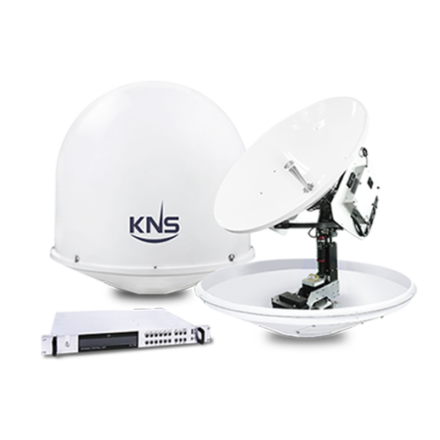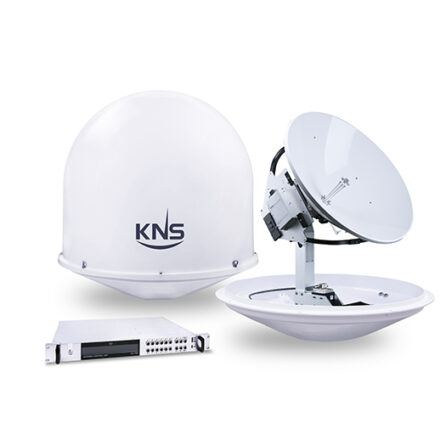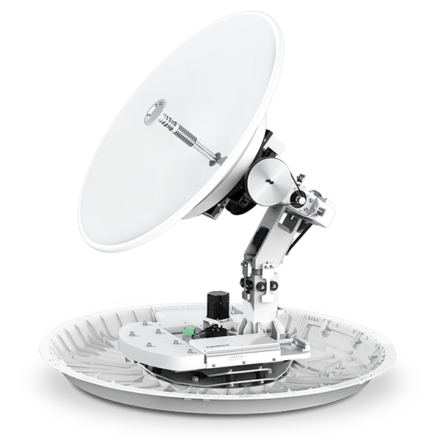Maritime VSAT Antennas
A Guide to Staying Connected at Sea
Have you ever wondered how ships stay connected to the internet while traversing the vast, unpredictable ocean? It’s a world where the tides of technology and the sea meet, and maritime VSAT (Very Small Aperture Terminal) antennas are the unsung heroes.
These parabolic dish antennas, stabilized to track satellites despite the motion of the ship, are vital for maintaining communication, navigation, and safety systems on board.
Let’s dive deep into the world of maritime VSAT, exploring how the size of your antenna can make or break your connection at sea.
The Problem: Staying Connected in the Open Sea
Imagine you’re in the middle of the ocean, miles away from land, and you need to send an important email or download weather updates.
The challenge here isn’t just about having an internet connection; it’s about having a stable, reliable link in an environment that’s anything but stable. This is where maritime VSAT antennas come into play, providing a lifeline to the digital world.
The Role of Antenna Size and Coverage
The first thing to note is that size does matter when it comes to maritime VSAT antennas. Starting at 60cm and scaling up to 3m in diameter, these antennas are your gateway to broader coverage and stronger connections.
It’s like having a larger net; the bigger it is, the more fish you can catch. Similarly, a larger antenna can capture more of the satellite signal, even at the edge of a beam’s coverage. This means you can stay connected even when you’re dancing on the fringes of a satellite’s reach.
But it’s not just about staying connected; it’s about staying connected during the challenges that nature throws at you.
Heavy rain or snow can dampen signals, but a larger dish powers through these conditions, ensuring that your data communication remains uninterrupted. It’s like having an all-weather friend who’s there for you, rain or shine.
Moreover, a curious twist in this aquatic tale is the relationship between antenna size and airtime costs. A larger antenna doesn’t just give you a better signal; it’s also more economical.
Satellite providers need to use less power to send data your way, which can translate into lower costs. It’s a win-win situation where you get a stronger connection and save money in the process.
Navigating the Frequencies: C-Band, Ku-Band, and Ka-Band
The choice of frequency band is like choosing the right vessel for your journey. Each band has its pros and cons, shaped by commercial more than technical factors.
C-Band, with its larger hardware but cheaper capacity, is the freighter of the internet seas – big and reliable, best suited for heavy bandwidth requirements.
Ku-Band, on the other hand, is the speedboat – smaller antennas, less expensive equipment but at a higher operational cost.
And then there’s Ka-Band, the jet ski, offering high speeds, mobility, and the ability to handle a lot of traffic, despite being more susceptible to weather disruptions.
Choosing the right band is crucial, as not all satellites cover every corner of the globe. It’s like planning your route based on the ports you can dock at. Before setting sail with a VSAT system, make sure the technology you choose matches your journey’s needs.
The Issue of Adjacent Satellite Interference
But it’s not all smooth sailing. Smaller antennas, while convenient, have a wider beamwidth, which can cause interference with nearby satellites.
It’s akin to having a noisy neighbor; your signal can unintentionally disrupt theirs, leading to restrictions or even being barred from the network.
It’s an important consideration, especially in crowded satellite regions.
Charting Your Course with Maritime VSAT
Selecting the right maritime VSAT setup is like charting a course for your voyage. It requires understanding the sea of options available and making informed choices based on your ship’s requirements and the regions you’ll navigate.
Companies like Satmarin offer a portfolio of antenna models from top manufacturers, ensuring you find the perfect fit for your maritime communication needs.
Set Sail with Confidence
In the vast expanse of the ocean, staying connected is not just a convenience; it’s a necessity. With the right maritime VSAT antenna, you can ensure that your ship remains a beacon of communication, no matter where your journey takes you. It’s about more than just staying online; it’s about ensuring safety, efficiency, and peace of mind on the high seas.
P.S. Could you imagine sailing the digital waves without dropping a signal? Yes or No?




